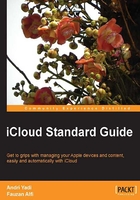
2000s – PC as a digital hub
The personal computer (PC) has evolved throughout the years from the age of productivity in the 1980s, where people used it for spreadsheets and databases, to the age of networking in the 1990s, where it connected to the Internet, and entered into its third age in the early 2000s, the age of digital lifestyle. Consumers had increasingly started using all kinds of digital devices, such as digital cameras, camcorders, music players, and PDAs, but these devices didn't make sense without a computer. The personal computer was going to become the center or digital hub of this new digital lifestyle, making all its pieces—music, photos, movies, contacts and data—come together.
On January 9, 2001, Apple's CEO, Steve Jobs, outlined Apple's "digital hub" strategy. The iMac became the center of a user's digital life, managing content on cameras, video cameras, mobile phones, and media players. It's a plan that put Apple's new OS X at the place where the Internet and the rest of a user's digital life meets. It's worked out well over the past decade; Apple's shares have risen by 2917.9 percent.
Microsoft, with its Windows operating system, went with a similar strategy with the release of Windows XP on October 25, 2001. Windows XP introduced—among other new features—a streamlined multimedia experience dubbed as "Media Center". Media Center emphasizes on DVD playback, TV tuner, DVR functionality, and remote controls. Then, Microsoft also introduced Microsoft Plus! Digital Media Edition for Windows XP and as a part of the Microsoft Plus! product line, designed to give users who own standard PCs more features for editing and playing with media files.
The introduction of iCloud in 2011 put an end to the PC as a digital hub strategy, especially for Apple.